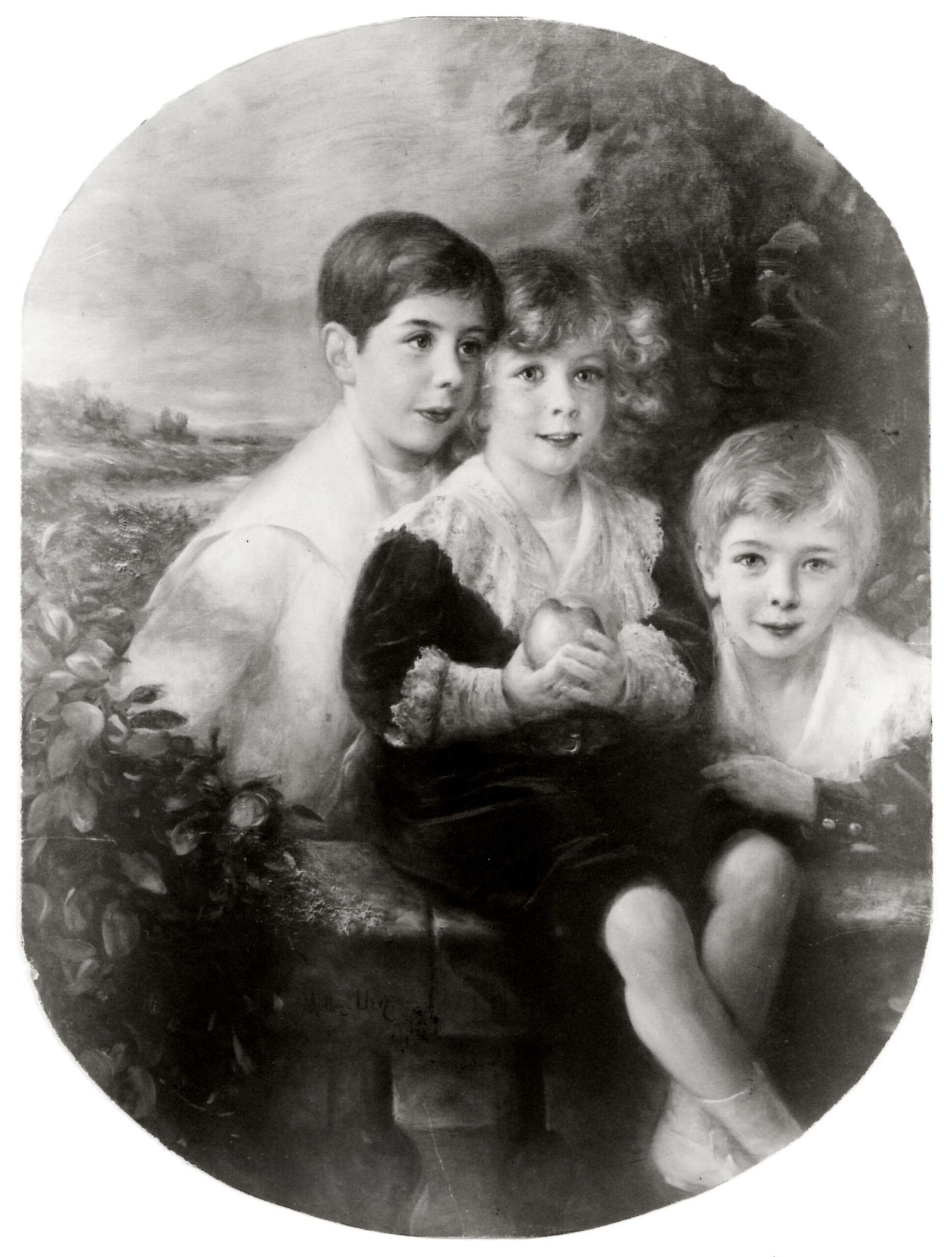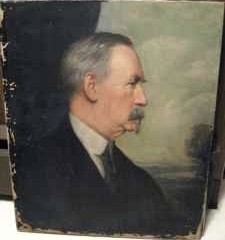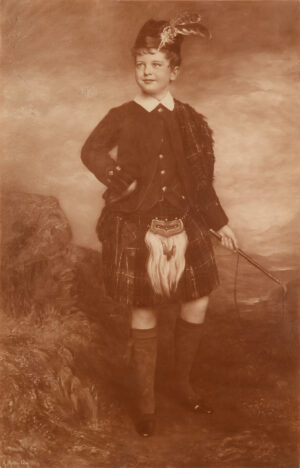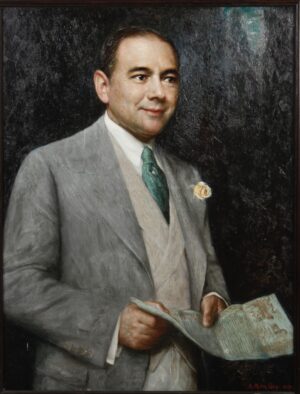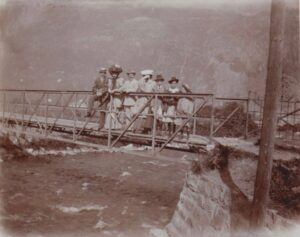
Muller-Ury on the bridge at Andermatt in the summer of 1908 with the three Seilern boys, a governess and an unknown couple.
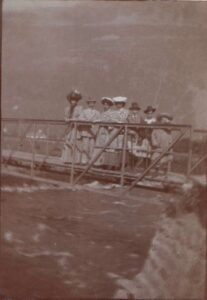
Muller-Ury standing on the bridge at Andermatt in the summer of 1908 with the three Seilern boys, a nanny and a governess and an unknown woman.
A portrait of the three sons of Count Carl Seilern und Aspang (1866–1940) and the American heiress Antoinette “Nettie” née Woerishoffer (1875-1901). The Seilern family’s ancestors had been ennobled after successful involvement with the Pragmatic Sanction of 1713. The Woerishoffer’s wealth derived mainly from the German-language New York newspaper, the Neue Yorker Staats-Zeitung, but also from the the success which Charles Woerishoffer had had on Wall Street. Their father’s sister Ida was married to Phillip Hennessy, whose sister Nora was the wife of the Royal Academician, Lord Methuen.
Charles Hugo (“Chappie”: March 25, 1899 – February 29, 1988), Count Oswald Seilern (Agust 20, 1900 – July 7, 1967) and Count Antoine Seilern (1901-1978). All three boys were born in England, and therefore enjoyed citizenship of both Austria and the United Kingdom. Muller-Ury was a close friend of their mother and father and he had acted as an usher at their wedding in New York in February 1898, and, along with the other ushers, had been given a gold cigarette box by ‘Carlo’ Seilern by way of thanks. After the death of their mother in 1901, the three Seilern boys divided their time between their grandmother, Anna Woerishoffer, in New York, and their father in London and Vienna, in the company of nannies and governesses (and frequently chaperoned by Muller-Ury), though until America entered the First World War, Mrs Woerishoffer spent 1912 to 1916 with her grandsons in Vienna. After Mrs Woerishoffer’s death in 1931 the three boys inherited her fortune which Muller-Ury told his sister in 1942 was some $18 million.
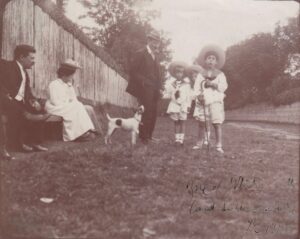
The artist with the three Seilern boys and the Count on the Isle of Wight in September 1906.
The group was painted in 1906 in London. The New York Herald, December 5, 1906, called the group ‘graceful’ and on December 8, 1906 comments that ‘…The boys are about 4, 6, and 7 years in age, and they have been painted out of doors.’
The picture was originally rectangular, but the only known photograph in the artist’s papers has been trimmed to circular edges top and bottom.


